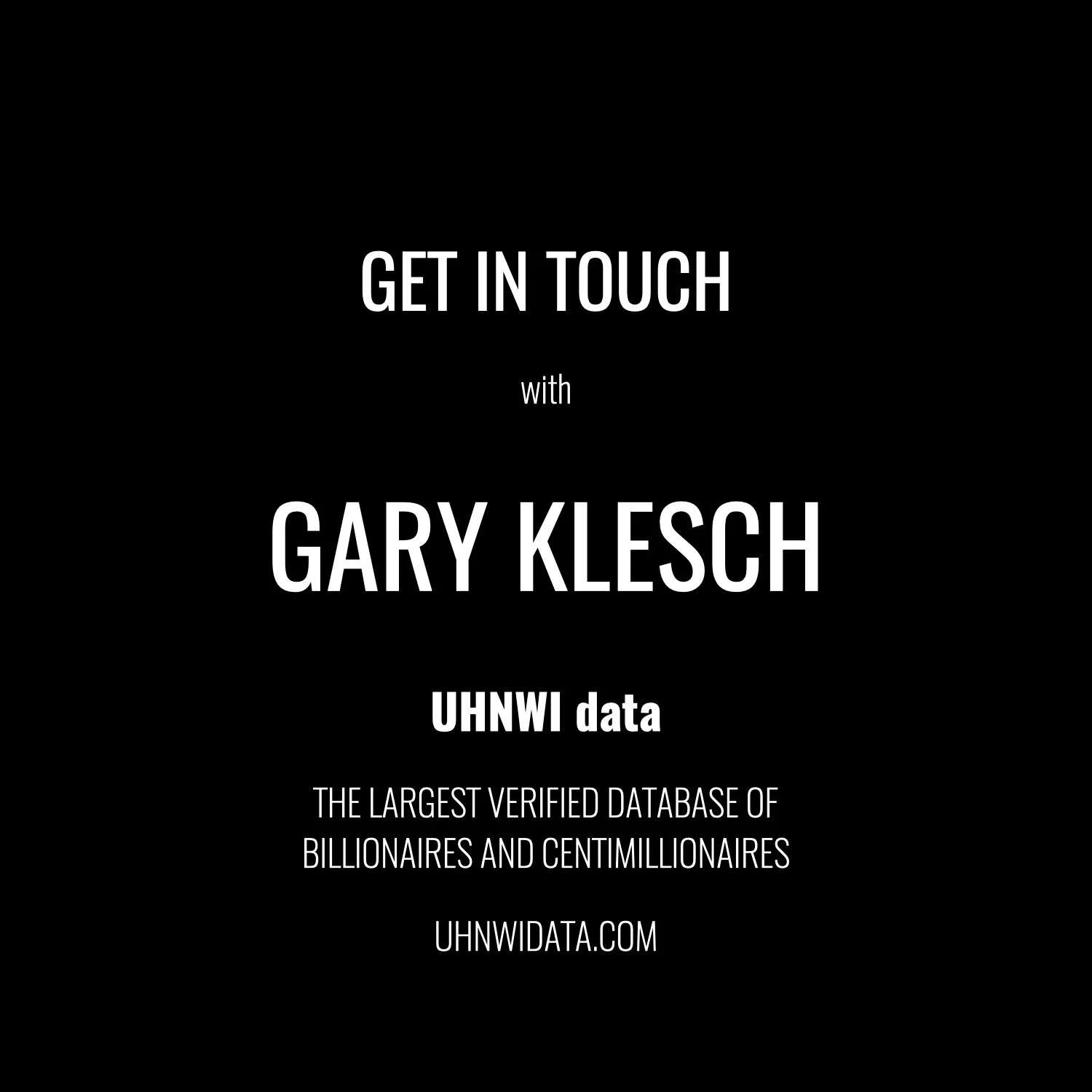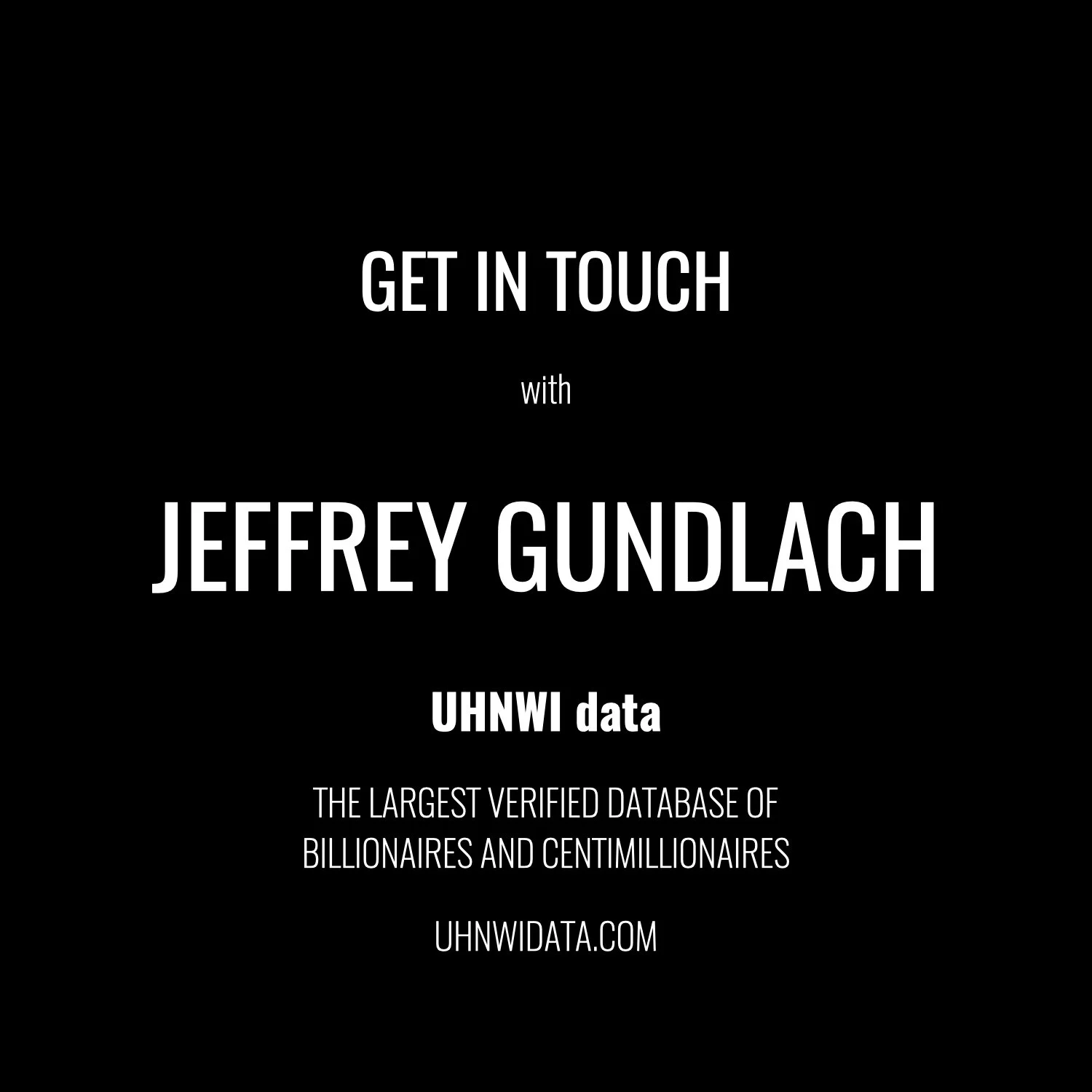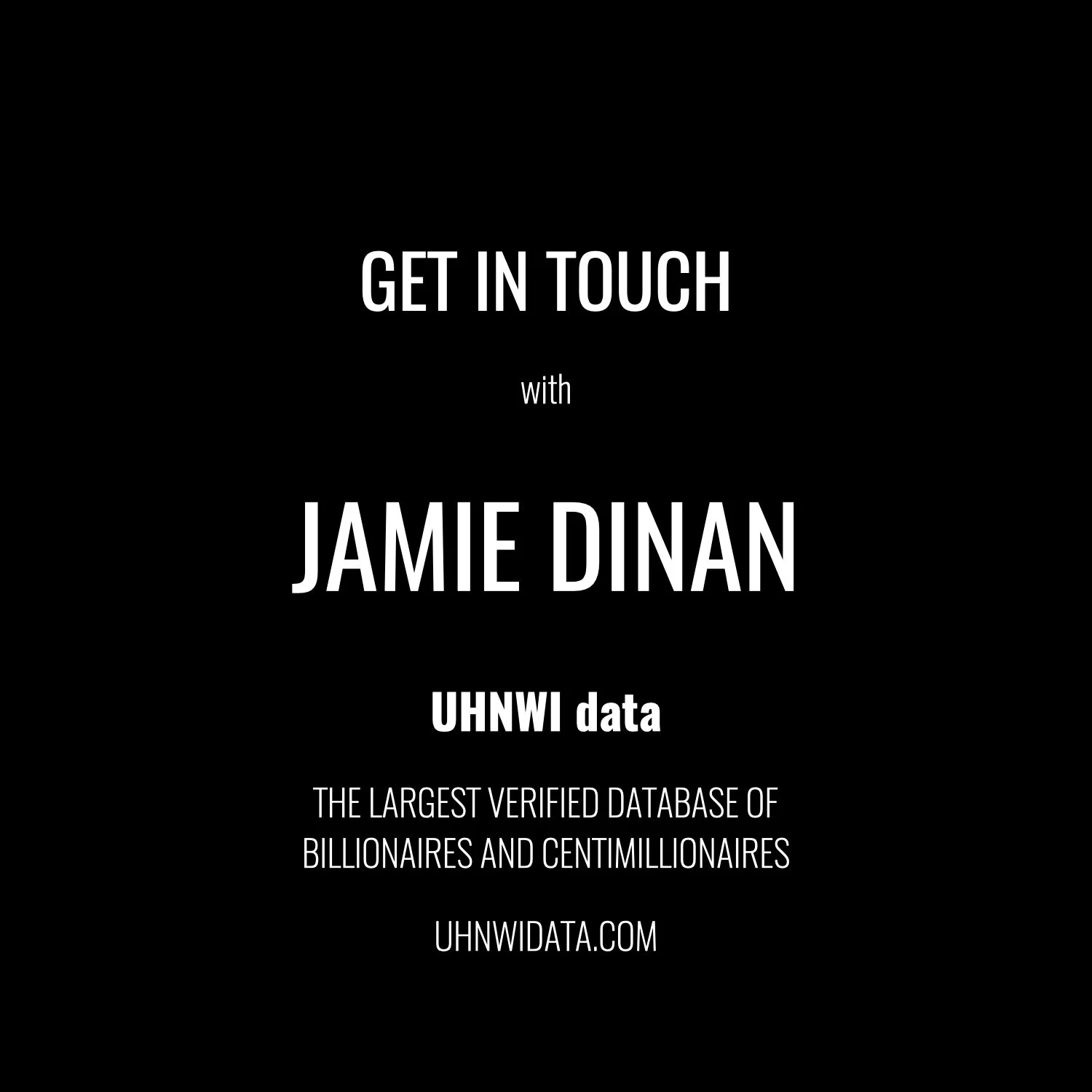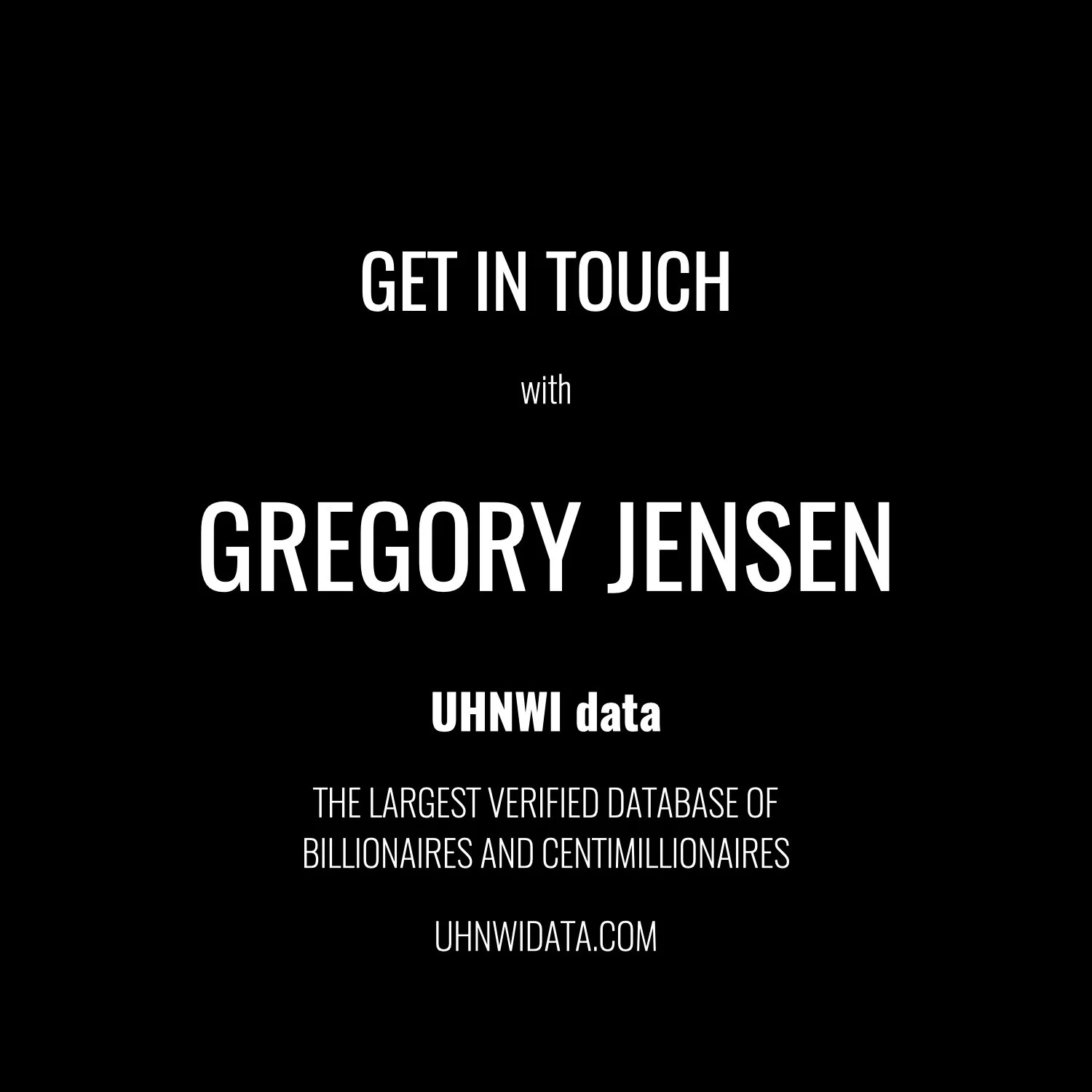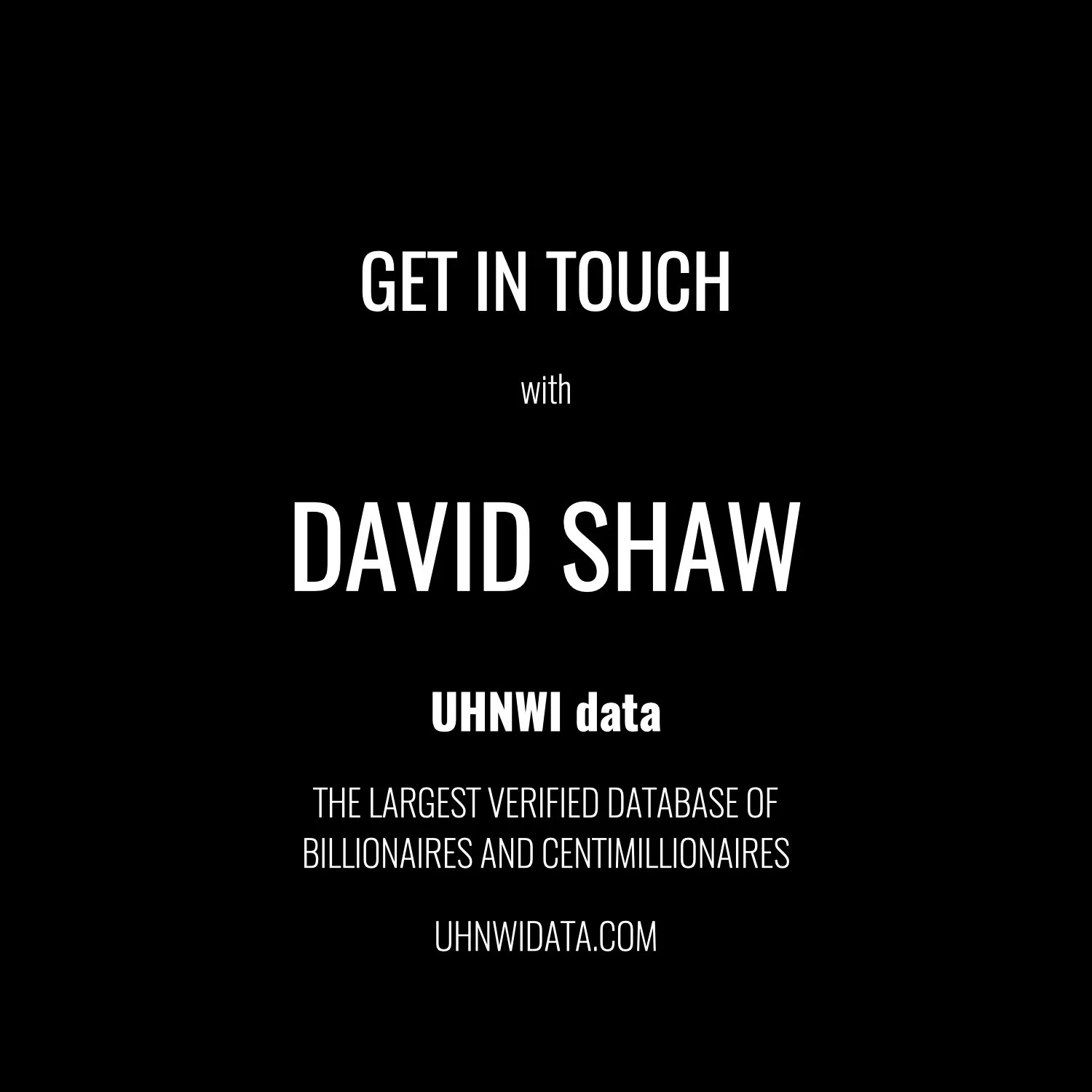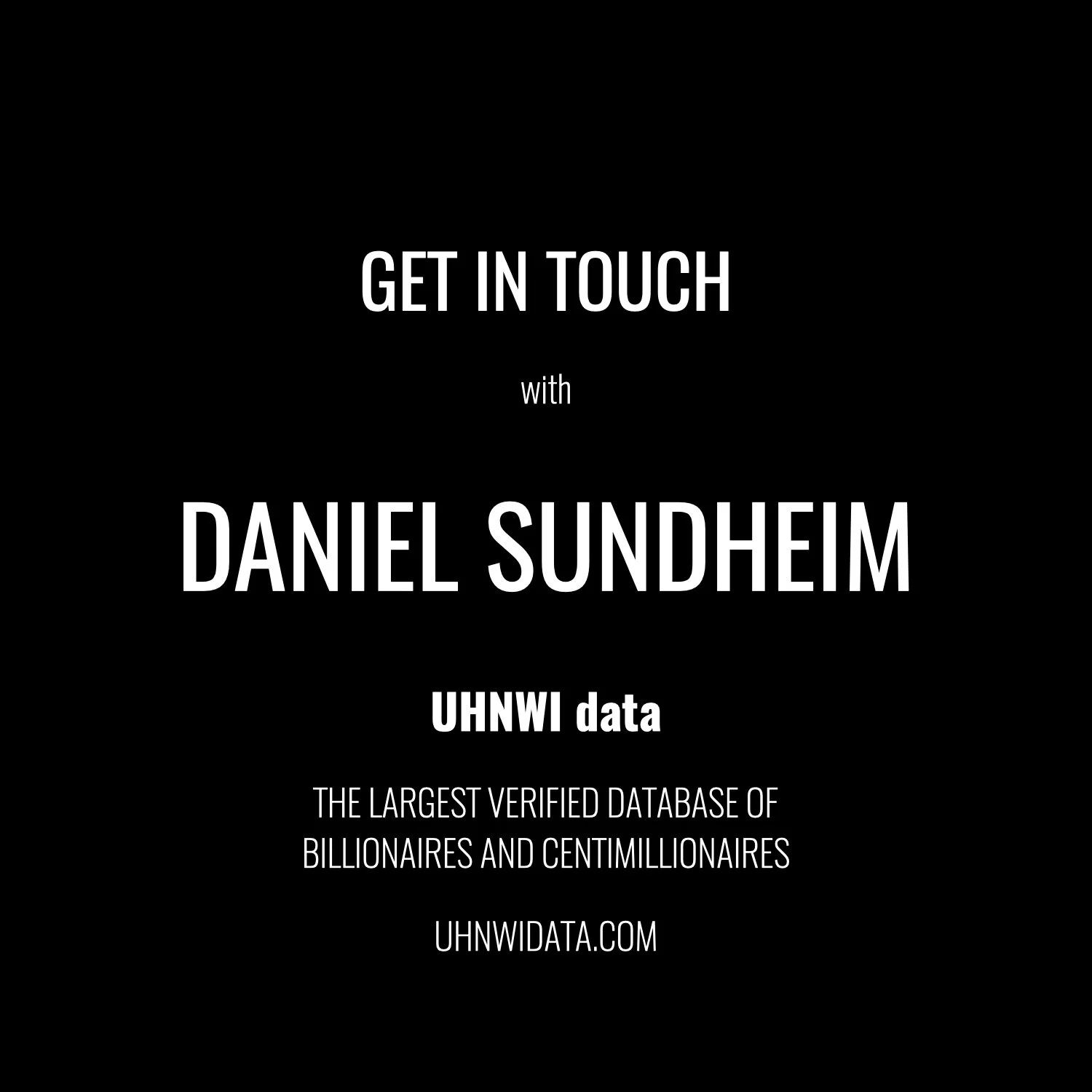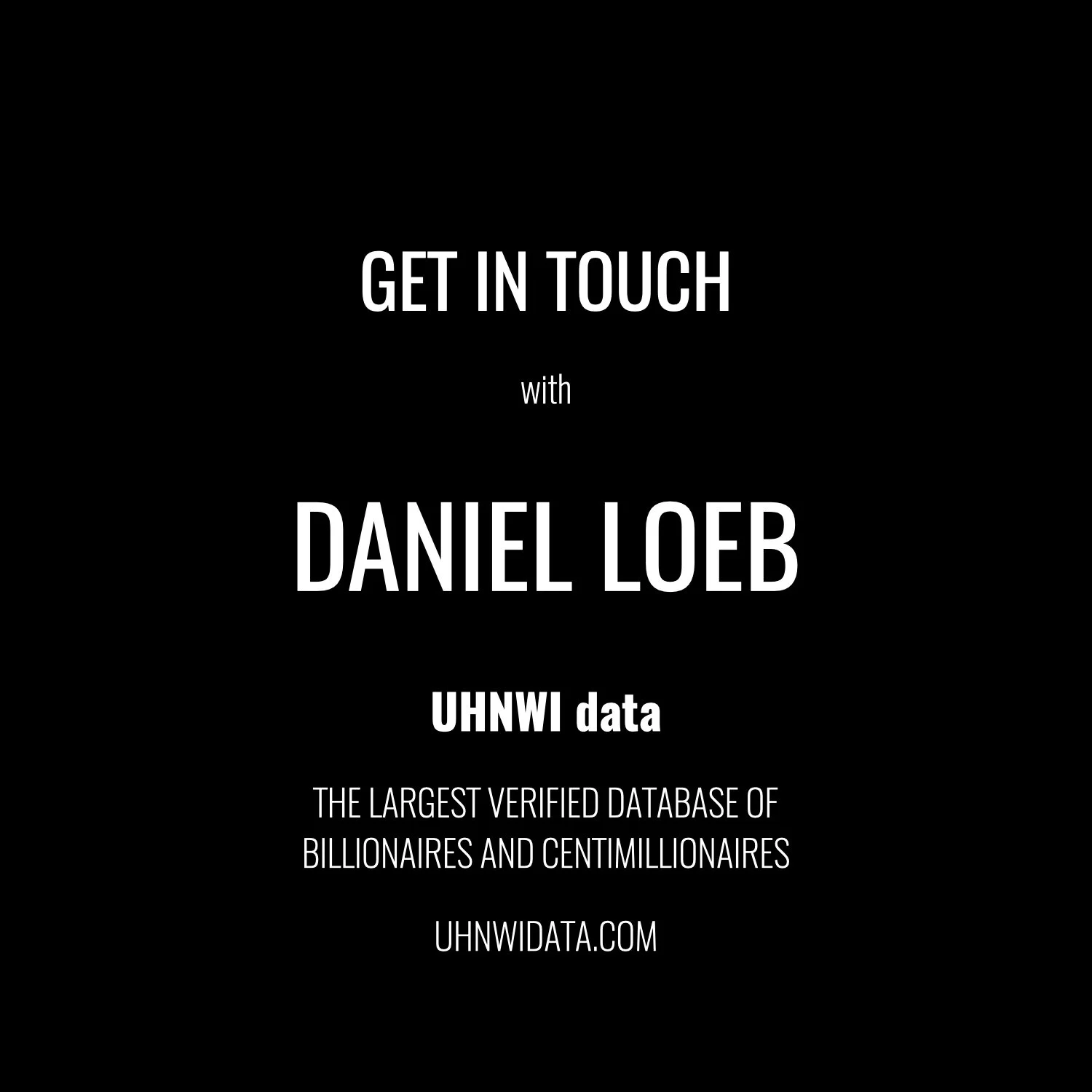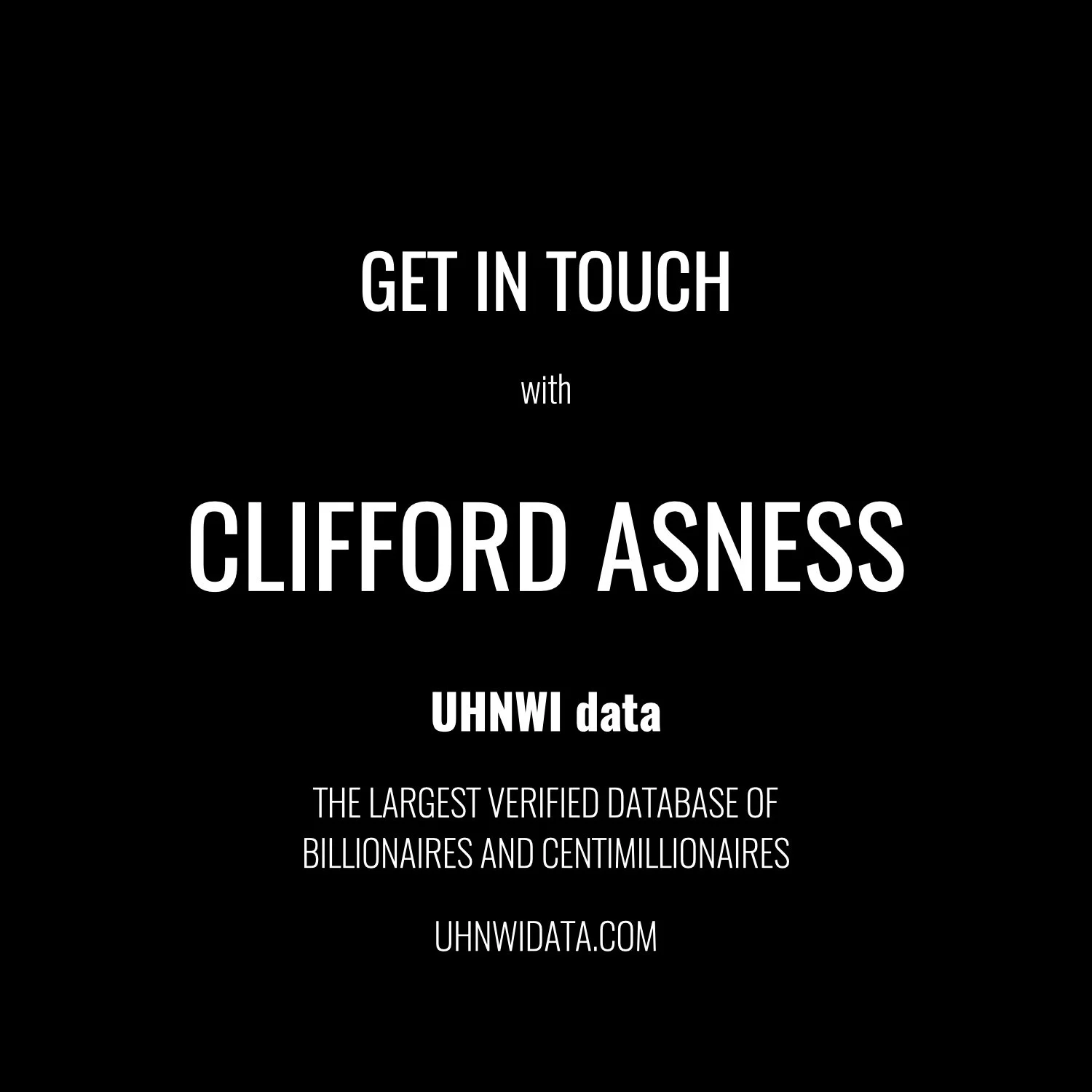Jeffrey Gundlach (born October 30, 1959) is an American fixed-income investor and the founder, chief executive officer, and chief investment officer of DoubleLine Capital LP, a Los Angeles-based investment management firm specializing in bonds and other debt securities.[1][2] Established in December 2009 after Gundlach's departure from TCW Group amid a dispute over firm direction, DoubleLine has grown to manage approximately $93 billion in assets as of mid-2025, focusing on total return strategies in mortgage-backed securities, corporate debt, and emerging markets bonds.[3][2]Gundlach built his reputation at TCW, where over 24 years he expanded the fixed-income division into a powerhouse generating billions in assets, earning acclaim for contrarian bets such as early warnings on the subprime mortgage bubble that presaged the 2008 financial crisis.[4][2] His ouster from TCW in 2009—following accusations of data mishandling that were later contested in litigation—prompted a rapid exodus of talent and capital to DoubleLine, underscoring loyalty to his investment approach rooted in rigorous credit analysis and macroeconomic forecasting.[4][2] Dubbed the "Bond King" by financial publications for his market influence, Gundlach has delivered strong risk-adjusted returns through funds like the DoubleLine Total Return Bond Fund, which has consistently outperformed benchmarks in volatile environments.[4]Among his accolades, Gundlach was named Money Manager of the Year by Institutional Investor in 2013 and nominated for Morningstar's Fixed Income Manager of the Decade for 2000–2009, reflecting empirical success in navigating interest rate cycles and credit risks.[5][2] He maintains a high-profile presence through annual "Just Markets" presentations, where he articulates views on fiscal policy, inflation, and asset allocation—often favoring gold and commodities amid concerns over U.S. debt sustainability—while avoiding equity-heavy portfolios in favor of yield-oriented fixed income.[4] Gundlach also engages in philanthropy, supporting arts and education, and is noted for collecting modern art by artists such as Andy Warhol and Willem de Kooning.[4]
Early Life and Education
Family Background and Childhood
Jeffrey Gundlach was born on October 30, 1959, in Amherst, New York, a suburb of Buffalo.[6][7] He grew up in a modest middle-class family in the Buffalo area, where his father, Arthur Gundlach (died 2013), worked as an industrial chemist for the coatings manufacturer Pierce & Stevens, and his mother, Carol, served as a teacher and homemaker from a working-class background.[7][8] The family's circumstances were not affluent, fostering an environment of resourcefulness amid limited financial means.[9] Little is publicly documented about specific childhood experiences or siblings, with available accounts emphasizing an ordinary upbringing that contrasted with his later prominence in finance.[8]
Academic Career and Departure from Yale
Gundlach graduated summa cum laude from Dartmouth College in 1981 with a B.A. in mathematics and philosophy.[10] Following this, he enrolled as a Ph.D. candidate in mathematics at Yale University, where he pursued advanced theoretical studies.[11]In the Yale program, Gundlach proposed a dissertation exploring the probabilistic implications of the nonexistence of infinity, arguing that infinity represents an illusion rather than a mathematical reality.[7] His dissertation advisor deemed the topic outside the mainstream of contemporary mathematical thought and rejected it, prompting Gundlach to abandon the Ph.D. pursuit after approximately two years.[8] [12]This departure from Yale in 1985 marked the end of Gundlach's formal academic trajectory, as he shifted focus away from academia toward other endeavors, including a brief pursuit of music in California before entering finance.[13] The rejection highlighted Gundlach's tendency toward unconventional ideas, which later influenced his contrarian approach in investment management.[7]
Professional Career
Entry into Finance and TCW Group
After departing Yale without completing his PhD in theoretical mathematics, Gundlach relocated to Los Angeles to pursue a career as a drummer but found limited success in the music industry.[8] In 1984, inspired by an episode of the television program Lifestyles of the Rich and Famous that identified investment banking as the highest-paying profession, he decided to enter finance and mailed résumés with aggressive cover letters to 23 investment firms listed in the Los Angeles Yellow Pages.[14]TCW Group, seeking quantitative expertise, interviewed Gundlach and hired him in 1985 for its fixed-income division, capitalizing on his strong mathematical background despite his preference for an equities role.[8][7] He prepared for the position by studying Inside the Yield Book by Sidney Homer and Martin Leibowitz, a seminal text on bond valuation.[14] Starting as a portfolio manager focused on quantitative analysis, Gundlach quickly demonstrated aptitude; within six months, he was entrusted with managing hundreds of millions in assets for a major corporate pension plan.[14]Over the ensuing years at TCW, a Los Angeles-based asset management firm then managing over $100 billion in assets, Gundlach specialized in mortgage-backed securities and fixed-income strategies, laying the groundwork for his reputation as a leading bond investor during his approximately 24-year tenure ending in 2009.[7][15]
Rise and Key Contributions at TCW
Gundlach joined TCW in 1985 as a fixed-income analyst on a 90-day probationary period, leveraging his quantitative background from Dartmouth College.[7] He quickly advanced within the firm's mortgage-backed securities (MBS) group, becoming its leading portfolio manager and establishing a reputation for granular analysis of mortgage pools.[16] Under his leadership, the TCW MBS team gained industry acclaim for outperforming peers amid volatile housing markets, even as the 2007-2008 financial crisis unfolded.[17]As co-manager of the TCW Total Return Bond Fund, Gundlach oversaw assets that grew to approximately $12 billion, delivering annualized returns of nearly 8% over the decade leading up to 2009, which positioned the fund to outperform 98% of its intermediate-term bond category peers during that period.[7] His strategy emphasized total return through active sector allocation in fixed income, including opportunistic bets on non-agency MBS and structured credit, which helped preserve capital relative to benchmarks during the housing downturn.[7] This performance earned him recognition as Morningstar's Fixed-Income Manager of the Year in 2006.[18]In 2005, at age 46, Gundlach was promoted to Chief Investment Officer (CIO) of TCW, a role in which he directed the firm's overall investment strategy across asset classes.[7] By 2009, he managed roughly $70 billion of TCW's $110 billion in total assets under management, with key contributions including prescient calls on the housing bubble's collapse in 2007, which allowed his portfolios to retain more pre-crisis gains than many competitors.[7] His tenure solidified TCW's position as a powerhouse in fixed-income investing, particularly in MBS and total return strategies, through a combination of macroeconomic foresight and rigorous credit selection.[17]
Departure from TCW and Legal Aftermath
In December 2009, TCW Group terminated Jeffrey Gundlach's employment as chief investment officer of its fixed-income division, citing discovery of a conspiracy involving him and several aides to misappropriate trade secrets, client data, and proprietary models to launch a competing firm.[19][20] TCW's chief counsel presented Gundlach with allegations of theft and disloyalty on December 4, 2009, leading to his immediate dismissal despite his role generating substantial fees for the firm.[20][21] Following the termination, over half of TCW's fixed-income professionals, including key portfolio managers, resigned to join Gundlach at his new venture, DoubleLine Capital, prompting TCW to claim losses exceeding $200 billion in assets under management initially transferred.[22][19]TCW filed suit against Gundlach and DoubleLine in January 2010 in Los Angeles Superior Court, accusing them of breach of fiduciary duty, intentional interference with contractual relations, conspiracy, and trade secret misappropriation, seeking damages estimated at $400 million to $500 million.[23][24] Gundlach's legal team acknowledged that departing employees downloaded significant volumes of TCW data but argued it consisted of non-confidential, publicly available or permissible materials not used to harm TCW.[19] Gundlach countersued, alleging wrongful termination motivated by TCW's desire to withhold deferred compensation and fees owed to him and his team, estimated at hundreds of millions, and claiming the firm breached prior agreements on profit-sharing.[25][26]The trial commenced in July 2011, featuring testimony from TCW executives, including CEO Marc Stern, who described the firing as akin to "cutting off your right arm" but necessary to prevent further client exodus, and from Gundlach, who denied orchestrating theft and asserted TCW's actions were retaliatory amid ownership changes involving Société Générale.[25][27] In September 2011, the jury delivered a split verdict, awarding Gundlach $66.7 million on his countersuit claims for unpaid compensation while denying TCW any damages on its allegations of trade secret theft or conspiracy.[26][28] Both parties appealed aspects of the ruling, but in December 2011, they reached an undisclosed settlement resolving all claims, allowing Gundlach to continue operations at DoubleLine without further litigation.[29][22]
DoubleLine Capital
Founding and Initial Challenges
DoubleLine Capital was founded on December 15, 2009, in Los Angeles, California, by Jeffrey Gundlach just 10 days after his termination from TCW Group on December 4, 2009.[30][31] Gundlach co-founded the firm with Philip Barach and 45 former TCW employees, establishing it as an employee-owned alternative investment manager focused on fixed-income strategies.[32] The startup secured initial seed capital through a minority investment from Oaktree Capital Management, which purchased a 20% stake for $20 million, providing essential backing absent from client assets at launch.[33][34]The firm's inception faced immediate legal and operational obstacles stemming from Gundlach's departure from TCW. TCW sued Gundlach, DoubleLine, and several ex-employees in January 2010, accusing them of a premeditated conspiracy to steal proprietary data, client lists, and trade secrets to build the rival entity, initially seeking $566 million in damages.[29][19] Gundlach countersued, alleging TCW violated his employment contract by withholding approximately $100 million in deferred compensation and performance bonuses accrued over years of managing TCW's fixed-income assets, which exceeded $100 billion at the time.[35] The dispute escalated into a protracted courtroom battle, with public revelations of internal TCW emails, compensation disputes, and Gundlach's personal conduct aired during the 2011 trial, creating distractions and uncertainty for DoubleLine's nascent operations.[20]In September 2011, a Los Angeles jury awarded Gundlach $66.7 million on his breach-of-contract claim against TCW, while rejecting TCW's punitive damages request but holding some DoubleLine employees liable for improper handling of TCW documents.[35] The parties reached a confidential settlement in December 2011, resolving all outstanding claims without admission of wrongdoing by either side.[36] Beyond litigation, DoubleLine encountered challenges in attracting institutional investors early on, as pensions and endowments proved cautious amid the TCW fallout and the post-financial crisis environment, limiting initial growth to retail and intermediary channels despite Gundlach's track record.[37] These hurdles tested the firm's resilience, yet its focus on active fixed-income management and Gundlach's performance enabled rapid asset inflows, reaching billions within the first year.[34]
Growth, Performance, and Assets Under Management
DoubleLine Capital experienced rapid initial growth following its founding on December 3, 2009, starting with no initial assets under management (AUM) but leveraging Jeffrey Gundlach's established reputation from TCW to attract capital quickly. By 2011, the firm had amassed approximately $10 billion in AUM, fueled by inflows into its flagship Total Return Bond Fund and transfers from former TCW clients. This expansion continued aggressively, reaching over $150 billion in AUM by 2019, marking one of the fastest growth trajectories for an investment management firm in history, driven by strong early performance in a low-interest-rate environment and Gundlach's market foresight.[34][38]The firm's AUM peaked above $140 billion in the early 2020s but subsequently declined amid challenging fixed-income markets, particularly during the 2022 interest rate hikes, which pressured bond valuations across the sector. As of June 30, 2025, DoubleLine's discretionary AUM stood at approximately $93.5 billion, reflecting net outflows and broader industry trends rather than isolated underperformance.[3] This contraction aligns with a firm-wide asset growth rate of -4.09% over the trailing twelve months ending in mid-2025, as reported by independent analytics.[39]Performance of DoubleLine's core strategies has been mixed, with the Total Return Bond Fund (DBLTX) serving as a benchmark for evaluation. The fund delivered annualized returns of about 5-7% in the low-rate years from 2010 to 2021, often outperforming the Bloomberg U.S. Aggregate Bond Index through active duration management and credit selection. However, in 2022, it posted a -12.76% return amid aggressive Federal Reserve tightening, closely tracking the index's -13.01% decline but highlighting vulnerability to rate sensitivity.[40][41]
YearTotal Return Bond Fund (I Share) Return (%)Bloomberg U.S. Aggregate Bond Index (%)
20205.607.51
2021-0.34-1.54
2022-12.76-13.01
20236.435.53
20243.041.70
Over the five years ending September 2025, the fund's average annual return was approximately 0.60%, underperforming the index's 0.70% amid persistent yield curve shifts, though risk-adjusted metrics like alpha remained modestly positive in select periods due to opportunistic credit allocations.[42][43] Recent 2025 year-to-date performance through October showed gains of around 7.71%, benefiting from stabilizing rates and mortgage-backed securities exposure.[42] Overall, DoubleLine's emphasis on total return via flexible fixed-income strategies has yielded competitive results in favorable conditions but exposed limitations during macroeconomic reversals, contributing to AUM volatility.[44]
Organizational Structure and Team
DoubleLine Capital operates as an independent, employee-owned limited partnership headquartered in Los Angeles, California, with DoubleLine Capital LP as a subsidiary of DoubleLine Management LP. Approximately 79% of DoubleLine Management's limited partnership interests are held by the firm's employees, fostering alignment between staff incentives and client outcomes through performance-based compensation, while about 20% is owned by affiliates of Oaktree Capital Management and 1% by the general partner.[45][46] The organizational structure emphasizes a stable, committee-driven approach to decision-making, overseen by an Executive Committee of senior executives who have collaborated for nearly two decades, handling day-to-day operations and strategic direction.[47] This setup supports specialized investment teams focused on fixed-income sectors, including credit, structured products, and global sovereign debt, with permanent members contributing to committees such as the Fixed Income Asset Allocation and Trading and Allocation Committee for risk management and portfolio oversight.[47][45]The Executive Committee comprises key leaders, many of whom joined shortly after the firm's founding in 2009: Jeffrey Gundlach as CEO and Chief Investment Officer; Ronald R. Redell, CFA, as President; Jeffrey Sherman, CFA, as Deputy Chief Investment Officer; Henry Chase as Chief Financial Officer and Treasurer; Patrick Townzen as Chief Operating Officer; Cris Santa Ana as Chief Risk Officer; Joan Elam as Chief Human Resources Officer; Youse Guia as Chief Compliance Officer; Earl Lariscy as General Counsel; Casey Moore as Chief Technology Officer; Barbara VanEvery as Chief Marketing Officer; Jonathan Kingery as Chief Distribution Officer; and Ali Zaidi, FCA, as Chief International Client Business Officer.[47] Gundlach, the founder, retains central authority over investment decisions, while the committee ensures operational efficiency across functions like compliance, risk, and technology.[45]As of September 2024, DoubleLine employs 262 people, including 94 investment professionals such as portfolio managers and analysts, with the core portfolio team averaging 23 years of industry experience and 17 years of internal collaboration.[46] A significant portion of the early team, including figures like Philip Barach and others, transitioned from TCW Group alongside Gundlach in December 2009, contributing to continuity in fixed-income expertise.[46] The firm's employee-owned model and low turnover underscore a focus on long-term stability over short-term gains, with resources shared across affiliated entities under DoubleLine Group LP for strategy-specific account monitoring and automated compliance via systems like Bloomberg AIM.[45]
Investment Philosophy and Strategies
Core Principles in Fixed Income Investing
Gundlach's approach to fixed income investing at DoubleLine Capital integrates top-down macroeconomic analysis with bottom-up security selection to pursue attractive risk-adjusted returns. The Fixed Income Asset Allocation (FIAA) Committee, chaired by Gundlach, convenes monthly to evaluate economic indicators such as inflation, employment data, purchasing managers' indices, and housing metrics alongside market variables like interest rates and credit spreads. This process informs sector weightings, yield curve positioning, and credit exposures, with adjustments implemented gradually over an 18- to 24-month horizon to align with long-term fundamentals rather than short-term market noise.[48]A cornerstone principle is rigorous security selection, emphasizing securities offering asymmetric, positively skewed risk-reward profiles that prioritize preservation of principal over chasing incremental yield. Portfolios are constructed to build par value systematically, avoiding trades that sacrifice capital for marginal income gains, particularly in volatile environments where credit defaults or rate shifts could erode value. Gundlach's team, including specialized portfolio managers, leverages deep research into structured products and other fixed income assets to identify undervalued opportunities, often favoring government-backed agency mortgage-backed securities (MBS) and U.S. Treasuries as core holdings for stability and liquidity.[2][49]Risk management is embedded throughout, prioritizing scenario resilience over benchmark hugging or unidirectional bets on interest rates or defaults. DoubleLine avoids "unnecessary risk," akin to crossing a double yellow line on a highway, by designing portfolios to outperform across multiple economic outcomes rather than optimizing for a single forecast. This includes maintaining flexibility in duration and credit quality while integrating trade execution and sector allocation to mitigate principal loss, reflecting Gundlach's view that fixed income success demands vigilance against hidden vulnerabilities in bond markets.[2][48]
Macroeconomic Framework and Causal Analysis
Gundlach's macroeconomic framework centers on the unsustainable trajectory of U.S. federal debt and deficits as primary drivers of long-term economic instability, positing that escalating interest expenses will crowd out productive spending and necessitate inflationary monetary responses. He argues that current debt-to-GDP ratios, already at approximately 99% as of late 2024, are projected to rise to 147-184% within a decade under baseline assumptions of moderate growth and persistent deficits, rendering the burden untenable without structural reforms.[50] This causal chain links fiscal profligacy—exacerbated by deficits averaging over $2 trillion annually despite low unemployment—to rising interest payments that could soon exceed tax revenues, forcing central banks toward money printing and eroding currency value.[51] [52]In analyzing inflation dynamics, Gundlach identifies government interventions to address debt-fueled inequality and central bank accommodation as root causes, rather than transient supply shocks, predicting persistent upward pressure even as headline measures moderate. He contends that deficits funded by Treasury issuance, combined with policies like radical rate cuts in response to downturns, will amplify inflationary spirals by boosting liquidity without corresponding productivity gains.[51] [53] Empirical indicators such as base effects, energy prices, and potential tariffs serve as proximate triggers, but the underlying causality traces to fiscal imbalances challenging the Federal Reserve's control, with deficits sequentially worsening throughout the 2020s.[54] [52]Recession risks in Gundlach's model stem from labor market fragilities and yield curve inversions, causally tied to overleveraged consumer and corporate balance sheets amid tightening financial conditions. He estimates a 60% probability of U.S. recession in 2025, driven by indicators like rising unemployment, declining average work hours, and housing market stagnation, which signal demand erosion not captured in optimistic GDP revisions.[55] These factors interact with global headwinds, including a weakening dollar from "anti-dollar" sentiment and de-dollarization trends, potentially amplifying domestic vulnerabilities through higher import costs and capital outflows.[51] [56]Broader causal realism in his analysis emphasizes skepticism toward official data reliability, attributing distortions to methodological shifts and political incentives, while prioritizing market-based signals like Treasury yields for forecasting policy responses. Productivity stagnation, absent transformative breakthroughs like sustained AI adoption, limits debt absorption capacity, reinforcing a vicious cycle where low growth perpetuates deficits.[57] Gundlach forecasts eventual systemic restructuring, including diversification from dollar assets, as markets price in these imbalances, with gold and non-U.S. equities as hedges against fiscal reckoning.[51]
Key Asset Allocation Views
Gundlach chairs DoubleLine's Global Asset Allocation Committee, where asset allocation decisions are made monthly based on sector fundamentals, relative valuation, and actively managed sector betas.[58] He similarly leads the Fixed Income Asset Allocation Committee, overweighting or underweighting sectors according to economic conditions.[48]In recent recommendations amid persistent inflation and U.S. dollar weakness—down 11% year-to-date as of September 2025—Gundlach has urged up to a 25% portfolio allocation to gold as a hedge against currency debasement, noting its strong performance (best since the 1970s) and forecasting prices reaching $4,000 per ounce by year-end.[59][60] For equities, he advises caution on U.S. stocks and diversification outside the U.S., favoring European equities (e.g., EURO STOXX 50 up 10.8% year-to-date) for exposure to industrials, financials, and energy, as well as select Asian markets excluding China—such as India, South Korea, and Taiwan via funds like the iShares MSCI Emerging Markets Asia ETF (up 27% year-to-date)—to capitalize on dollar decline and growth prospects.[59][60][61]Within fixed income, Gundlach prefers local-currency emerging market bonds, targeting 20-25% allocation for their higher yields, superior economics, and lower debt-to-GDP ratios relative to the U.S., particularly as dollar weakness enhances returns.[62] He recommends underweighting long-duration U.S. Treasuries (e.g., 30-year), which may fail as safe havens in risk-off scenarios, in favor of shorter 3- to 5-year durations, alongside opportunities in mortgage-backed securities, investment-grade corporates, and mid-duration Treasuries.[62][63] Overall, these views position emerging markets debt, gold, and non-U.S. equities as key beneficiaries of anticipated dollar depreciation and 3% inflation exceeding Federal Reserve targets.[64][62]
Predictions and Market Calls
Notable Accurate Forecasts
In June 2007, Gundlach warned that the subprime mortgage sector represented a "total unmitigated disaster" that would worsen, a call made over a year before the peak of the financial crisis in 2008, when mortgage-backed securities suffered widespread losses exceeding $1 trillion globally.[65][66] This foresight allowed his firm, TCW, to largely avoid the carnage in mortgage-backed and junk bonds during 2007-2008, preserving client assets amid the housing market collapse that triggered the Great Recession.[67][68]Gundlach also anticipated persistent inflation pressures in late 2021, forecasting that U.S. inflation would remain above 5% through the end of that year and exceed 4% throughout 2022, countering prevailing views that price increases were transitory.[69] Consumer Price Index (CPI) data confirmed this, peaking at 9.1% year-over-year in June 2022 before gradually easing but staying elevated above 4% for much of the period, prompting the Federal Reserve to raise the federal funds rate from near-zero to over 5% by mid-2023.[69] His emphasis on structural inflationary drivers, including supply chain disruptions and fiscal stimulus, aligned with the subsequent bond market repricing, where 10-year Treasury yields rose from below 1.5% in early 2021 to over 4% by late 2023.[70]These calls stemmed from Gundlach's analysis of underlying credit risks and macroeconomic imbalances, such as overleveraged housing debt in 2007 and excess liquidity fueling demand-pull inflation in 2021, demonstrating his focus on causal factors over consensus narratives.[71] While not infallible, these predictions highlight instances where his fixed-income expertise yielded verifiable outcomes ahead of broader market recognition.
Inaccurate or Overturned Predictions
In January 2024, Gundlach forecasted lower interest rates starting mid-year due to an impending recession, higher market volatility from subdued growth and persistent inflation, struggling equities amid economic contraction, and bonds as a compelling investment opportunity with yields compressing.[72] These predictions proved inaccurate: the 10-year Treasury yield climbed from 3.95% at the start of 2024 to 4.58% by year-end despite three Federal Reserve rate cuts, the VIX averaged 15.5 (lower than 2023's 16.9), U.S. GDP expanded by 2.7% without entering recession, the S&P 500 gained 25%, and major bond funds returned just 1.39% on average with intermediate-term Treasury ETFs declining 0.61%.[73]Gundlach has repeatedly expressed bearish views on U.S. equities that did not materialize as anticipated. In December 2019, with the S&P 500 near 3,200, he stated investors "won't see these market highs again in our lifetimes," citing overvaluation and economic fragility. The index subsequently surged past 4,800 by mid-2025, driven by post-pandemic recovery, technological advances, and monetary stimulus, invalidating the call. Similarly, in August 2016 amid global growth concerns, he urged clients to "sell everything," positioning defensively against an expected downturn.[74] Equities remained range-bound short-term but then rallied sharply, with the S&P 500 nearly tripling by 2021, underscoring the prediction's failure to capture the bull market's persistence.Gundlach has acknowledged personal investment errors reflecting overturned or mistimed market calls. In April 1986, he sold 30-year Treasuries at a 7% yield, believing it marked a peak, only for prices to rally further after re-entry, resulting in substantial losses and a lesson in prompt exits.[68] During the 2002-2003 junk bond recovery, he avoided high-yield securities in his mortgage fund due to perceived risks post-Enron and WorldCom scandals, missing 30% returns while safer Treasuries offered near-zero yields.[68] In spring 2020, amid the COVID-19 market crash, he anticipated a corporate bond collapse to exploit but was preempted by aggressive Federal Reserve interventions, which stabilized spreads and eliminated the expected dislocation.[68]In April 2020, shortly after the pandemic-induced lows, Gundlach initiated short positions on equities, forecasting a retest of March troughs due to underestimated social and economic disruptions. The S&P 500 instead recovered over 60% by year-end, propelled by fiscal aid, vaccine progress, and central bank support, rendering the bearish stance incorrect. These instances highlight instances where Gundlach's macroeconomic caution, often rooted in debt dynamics and valuation concerns, clashed with resilient market outcomes influenced by policy responses and growth surprises.
Overall Track Record and Empirical Evaluation
The DoubleLine Total Return Bond Fund (DBLTX), Gundlach's flagship vehicle launched on April 6, 2010, has delivered an annualized return of 4.06% through October 24, 2025, surpassing the Bloomberg US Aggregate Bond Index benchmark over the same period.[75] This long-term outperformance stems from active management emphasizing agency mortgage-backed securities and tactical duration adjustments, which proved effective during periods of market stress, including the 2011 European debt crisis and the 2022-2023 interest rate surges.[11] [76]Over shorter horizons, performance has varied but maintained relative strength: the fund's 5-year annualized return of 0.68% exceeded the index's 0.10%, reflecting superior downside protection amid the post-pandemic bond market decline, while the 10-year return of 1.95% trailed the index's 2.12% slightly due to conservative positioning in low-yield environments.[75] In the most recent 1-year period, it achieved 7.22% versus the index's 6.43%, ranking in the top quartile among intermediate core bond peers.[75] These results indicate consistent generation of alpha through credit selection and yield curve navigation, though not without periods of underperformance in sustained bull markets for fixed income.[77]Empirical evaluation of Gundlach's market predictions reveals a directional accuracy in bond-specific calls—such as foreseeing Treasury yield spikes during quantitative tightening—but weaker timing on macroeconomic events like recessions, which he has forecasted annually since at least 2016 without realization.[78] Specific instances include erroneous 2024 predictions on all five major counts (e.g., stock market peak and deeper yield declines) and an unfulfilled 2022 oil price surge to $200 per barrel.[79] [80] Despite these misses, the integration of bearish views into portfolio construction has enhanced risk-adjusted returns, with the fund outperforming 92% of peers over certain 5-year windows ending in prior years.[81]Overall, Gundlach's track record demonstrates robust empirical success in fixed income execution, yielding higher compounded returns than passive indexing since inception, tempered by a propensity for overly cautious macro outlooks that, while occasionally premature, have prioritized capital preservation over chasing cyclical rallies.[31] [75]
Controversies and Criticisms
Feuds with Industry Peers
Jeffrey Gundlach has engaged in public disputes with fellow bond investor Bill Gross, often centered on performance comparisons and the informal "Bond King" moniker. In September 2023, Gross, during an interview on the "Odd Lots" podcast, dismissed Gundlach's claim to the title, stating that DoubleLine Capital's assets under management had declined from a peak of $150 billion to around $55 billion and criticizing Gundlach's historical returns as inferior to his own at PIMCO.[82] Gross attributed the personal animosity to a conversation following his 2014 departure from PIMCO, during which he sought Gundlach's advice but felt rebuffed.[83] Gundlach responded via social media, expressing indifference and wishing Gross felt "better about himself," while noting DoubleLine's strong ongoing performance and asset base exceeding Gross's cited figure.[83][84]The rivalry dates back further, with Gross in October 2014 likening himself to basketball legend Kobe Bryant and Gundlach to LeBron James during a private meeting, implying superior expertise despite acknowledging Gundlach's rising prominence.[85] By 2015, Gross publicly critiqued "unconstrained" bond funds for excessive risk, indirectly targeting strategies akin to Gundlach's DoubleLine Flexible Income Fund, which some analysts viewed as bordering on unconstrained despite Gundlach's emphasis on fixed-income focus.[86] Performance head-to-heads, such as a 2013 analysis of their flagship total-return funds, highlighted periods where Gross's PIMCO Total Return Fund outperformed DoubleLine's equivalent, fueling ongoing barbs amid broader market debates on bond strategies.[87]Gundlach has also clashed with rating agency Morningstar over methodology and star ratings for his funds. In July 2015, he publicly accused Morningstar of undervaluing DoubleLine's risk-adjusted returns by applying outdated benchmarks, leading to a "stare-down" where Gundlach withheld data and demanded revisions, arguing the agency's models failed to capture his active management edge in fixed income.[88] Morningstar defended its quantitative approach, but the dispute underscored Gundlach's broader critiques of industry metrics that he claimed penalized innovative allocation over rigid categorization.[88] These exchanges reflect Gundlach's combative style toward perceived institutional shortcomings in evaluating peer performance.
Critiques of Gundlach's Bearish Stance
Critics have faulted Jeffrey Gundlach's bearish market predictions for occasionally prompting investors to sideline during substantial rallies, arguing that his emphasis on downside risks overlooks resilient economic and policy supports. In December 2018, Gundlach declared U.S. equities in a bear market, asserting the S&P 500 would breach its February low of around 2,581 amid slowing growth and trade tensions.[89] The index instead climbed 28.9% in 2019 to close above 3,230, fueled by Federal Reserve rate cuts and easing trade fears, leading some market analysts to critique the call's timing as overly conservative and detached from monetary policy pivots.[90]A parallel critique emerged in early 2020, when Gundlach warned of a probable retest of March pandemic lows—around 2,237 on the S&P 500—citing underestimated social and economic disruptions.[91] Markets rebounded sharply, with the S&P gaining 16.3% for the year and over 67% from the March trough by December, driven by unprecedented fiscal stimulus and vaccine progress; commentators noted this as evidence of Gundlach's pessimism underweighting adaptive policy responses and corporate earnings resilience.Hedgeye Risk Management explicitly challenged Gundlach's macro framework in a 2019 review, identifying three misalignments in his Treasury yield and growth forecasts, including overreliance on non-accelerating quadrants that failed to anticipate Fed easing's impact on bonds.[92] Such analyses portray his bearish stance as structurally risk-averse, potentially yielding lower returns versus benchmarks during expansions, though Gundlach counters that avoiding catastrophic drawdowns justifies the approach, admitting to repeated errors across his 35-year career.[68]More recently, Gundlach's 2023 characterization of stocks as in a "protracted bear market" preceded a 24% S&P advance that year and further gains in 2024, reinforcing perceptions among skeptics that his default caution—rooted in debt, inflation, and fiscal concerns—may lag cyclical upswings.[93] Proponents of passive indexing, like those in a 2016 Irish Times piece, advise against heeding such directional bets, citing inconsistent hit rates despite Gundlach's fixed-income successes.[94]
Responses to Mainstream Economic Narratives
Gundlach has consistently challenged the mainstream narrative that inflation spikes, such as those observed in 2021, would prove transitory, arguing instead that persistent supply chain disruptions, commodity price surges, and expansive monetary policy rendered such optimism speculative. In April 2021, he criticized Federal Reserve assertions of transitory pressures, noting that rising commodity prices and money supply growth indicated a more enduring inflationary dynamic unlikely to abate quickly.[95] By September 2021, Gundlach highlighted depleted inventories as evidence against the transitory thesis, emphasizing structural shortages that sustained price pressures.[96] This view contrasted with consensus forecasts from institutions like the Fed, which initially downplayed risks, though subsequent data validated Gundlach's caution as inflation peaked at 9.1% in June 2022.[97]On the prospect of a "soft landing"—a mainstream expectation post-2022 rate hikes where growth slows without recession—Gundlach has dismissed it as improbable, asserting that the U.S. economy had already entered recessionary territory by late 2024 based on indicators like inverted yield curves and weakening consumer metrics. In February 2023, he warned of an impending hard landing, stating that whether soft or hard, investors required defensive asset reallocations amid tightening financial conditions.[98] He reiterated in 2024 that recovery narratives overlooked entrenched issues like household debt accumulation, with credit card balances exceeding $1 trillion, undermining consumption-driven growth assumptions.[99] Gundlach's 50-60% recession probability for 2025, derived from over two dozen indicators including the Leading Economic Index, exceeded Wall Street medians around 30%, highlighting his skepticism of overly rosy GDP projections.[55][100]Gundlach has also rebuffed Modern Monetary Theory (MMT), a framework gaining traction in policy circles for justifying deficit spending without inflation fears, labeling it "pretzel logic on steroids" in December 2019 for ignoring fiscal limits and currency debasement risks.[101] He extended this critique to broader fiscal narratives, warning in 2025 of unsustainable U.S. debt trajectories—projected to surpass 120% of GDP—fueling an "anti-dollar wave" and eroding Treasury safe-haven status amid global dedollarization trends.[102] In August 2025, Gundlach questioned the reliability of official economic data, suggesting manipulations or lags distorted perceptions of cooling inflation and robust growth, a view informed by discrepancies in metrics like unemployment claims versus household surveys.[57] These positions underscore his emphasis on empirical signals over institutional reassurances, often citing historical parallels like 1970s stagflation to counter optimistic equilibria posited by mainstream models.
Political and Economic Commentary
Critiques of Monetary Policy and MMT
Jeffrey Gundlach has repeatedly denounced Modern Monetary Theory (MMT), characterizing it as fundamentally flawed and dangerous for fiscal discipline. In March 2019, during an investor webcast, he described MMT as a "crackpot idea" and "complete nonsense," arguing it serves as a pretext for justifying expansive socialist programs by downplaying the risks of unlimited deficit spending so long as the Federal Reserve maintains low interest rates without triggering inflation.[103] He warned that such a framework could provoke a "significant boycott of long-term bonds," as investors reject the monetization of debt inherent in printing currency to cover obligations.[103]Gundlach elaborated on these concerns in December 2019, labeling MMT "pretzel logic on steroids," "ridiculous," and "highly illogical," particularly its core assertion that sovereign issuers of their own currency can generate infinite funds without consequence.[101] He critiqued the theory's reliance on sustained economic growth outpacing interest rates, noting that negative growth—common in recessions—would render debt servicing untenable, especially for long-term fixed-rate bonds spanning 10 or 30 years.[101] Gundlach dismissed MMT analogies, such as governments "investing" rather than borrowing, as misleading simplifications that obscure real inflationary pressures and erode bond market confidence.[101]Beyond MMT, Gundlach has voiced pointed criticisms of the Federal Reserve's broader monetary policy execution, often highlighting its reactive nature and overreliance on short-term indicators. In January 2025, he likened the Fed to the nearsighted cartoon character Mr. Magoo, "driving around, bumping into things" due to excessive "short-termism," which leads to zigzagging decisions rather than coherent long-term strategy amid rising inflation trends.[104] He pointed to monthly CPI increases of 0.4% over five months, pushing the 12-month rate to 2.9%, as evidence of underappreciated inflationary momentum that the Fed's data fixation fails to address proactively.[104]In August 2025, following the Fed's decision to hold rates steady, Gundlach questioned the reliability of pivotal economic data like jobs reports, arguing they distort policy calibration while inflation persistently exceeds the 2% target, creating untenable tension with the Fed's dual mandate.[105] He has further cautioned that internal divergences among Fed officials signal vulnerability to inflationary surprises, potentially exacerbated by external factors like tariffs, which the central bank may underestimate in its credibility assessments.[106][107] These critiques underscore Gundlach's view that accommodative policies risk entrenching nominal growth without productivity gains, ultimately fueling debt unsustainability and market distortions.[52]
Views on Fiscal Policy and Government Debt
Gundlach has repeatedly criticized the trajectory of U.S. fiscal policy, arguing that unchecked government spending and persistent deficits are rendering the national debt unsustainable. In a December 2024 interview with The Economist, he stated that under the next few presidential administrations, the debt would "mushroom beyond the government's ability to service it, perhaps even beyond the credulity of the country's creditors," emphasizing the need for fiscal restraint to avert a crisis.[50] He has highlighted how rising interest expenses—projected to consume up to 45% of tax revenue by 2034 amid higher rates and potential recession—exacerbate borrowing costs and crowd out productive investment.[108]Central to Gundlach's concerns is the "out of control" nature of federal expenditures, which he views as decoupled from revenue growth and increasingly reliant on debt issuance. In July 2024 remarks reported by Reuters, he advocated trimming government spending to reduce fiscal deficits, warning that without such measures, spiraling debt could trigger market disruptions or loss of investor confidence in U.S. Treasuries.[109] He has linked this fiscal profligacy to broader economic vulnerabilities, including untenable interest burdens that could prompt a "reckoning" for dollar-based assets, as expressed in June 2025 comments to Bloomberg.[110]Gundlach's analysis underscores a causal link between fiscal irresponsibility and monetary challenges, positing that large deficits undermine the Federal Reserve's ability to manage inflation and yields effectively. During a September 2025 CNBC appearance, he critiqued how escalating deficits and spending pressures distort the Treasury yield curve, particularly disadvantaging long-term bonds amid policy uncertainty.[64] He has consistently urged investors to anticipate structural shifts, such as reduced demand for U.S. debt, driven by these fiscal dynamics rather than transient cyclical factors.[111]
Election and Policy Predictions
Gundlach accurately anticipated Donald Trump's victory in the 2016 United States presidential election, citing overlooked voter sentiment that polls failed to capture.[112] In the lead-up to the 2020 election, he repeatedly forecasted a second Trump term over Joe Biden, dismissing polls as unreliable due to a "highly toxic political environment" that suppressed visible support for Trump; on March 5, 2020, he described Biden as "completely unelectable" despite a potential Democratic nomination win.[113][114] By October 27, 2020, Gundlach maintained that polls were "probably wrong again," akin to 2016, and predicted post-election demonstrations regardless of the outcome, while doubting a Biden win would secure the Senate.[115][116]Regarding the 2024 election, Gundlach offered limited explicit candidate forecasts in public commentary, instead emphasizing that outcomes under either major-party candidate would have muted long-term investor impacts compared to structural economic forces.[117] On November 7, 2024, shortly after voting concluded, he warned of upward pressure on interest rates should Republicans gain unified control of Congress alongside the presidency, attributing this to aggressive fiscal expansion, tax cuts, and deregulation that could exacerbate inflation and Treasury supply.[118]In policy predictions tied to electoral scenarios, Gundlach has highlighted risks from expansive fiscal measures, such as those under Republican majorities, including sustained deficits from tax reductions and spending that could elevate long-term yields and challenge bond markets.[119] He has critiqued tariff policies associated with Trump-era platforms as erratic and lacking coherent economic rationale, noting in March 2025 that such measures "change seemingly by the hour, on-again off-again," potentially disrupting trade without clear benefits.[120] These views align with his broader forecasts of policy-driven inflation persistence and dollar weakening under debt-heavy regimes, independent of specific election results.[61]
Personal Life
Art Collection and 2017 Burglary
Gundlach maintains a substantial private collection of modern and postwar American art, which he began assembling in the late 1980s with California Impressionist works purchased for around $3,000 each.[121] His holdings later expanded to include mid-century masters such as Robert Rauschenberg, Andy Warhol, Mark Rothko, Richard Diebenkorn, Philip Guston, and Willem de Kooning, with approximately 40 paintings and sculptures displayed at his Los Angeles residence.[122] Notable acquisitions feature Warhol's 1962 Lemon Marilyn, bought for $28 million in 2007 and now valued over 300% higher, and a Piet Mondrian painting acquired for $50.5 million in 2015 that influenced the naming of his firm, DoubleLine Capital. Gundlach approaches art collecting through a financial lens, emphasizing long-term appreciation and risk management akin to bond investing, where success rates hover around 60%.[121] His passion traces back to early visits to the Albright-Knox Art Gallery (now Buffalo AKG Art Museum), to which he donated $65 million in 2023 for expansion projects.[121]On September 12–14, 2012, Gundlach's Santa Monica home was burglarized in his absence, with thieves stealing artworks valued by him at approximately $10 million—including pieces by Piet Mondrian (Composition (A) En Rouge et Blanc), Jasper Johns, Frank Stella, Guy Rose, and Hanson Duvall Puthuff—along with a 2010 Porsche Carrera 4S, luxury watches (such as Glashütte and Breitling models), rare wines, and cash.[123][124][125] Prosecutors later assessed the art's minimum value at $3.2 million.[123] Gundlach publicly offered an initial $200,000 reward for information leading to the undamaged return of the pieces, escalating it to $1.7 million, one of the largest ever for a private art theft at the time.[125][123]The stolen artworks were recovered undamaged on September 27, 2012, following tips and search warrants executed by Santa Monica and Pasadena police at an auto sound shop (Al & Ed's Autosound) and a San Gabriel residence, where most paintings were found hidden.[124] Gundlach aided the investigation by searching online for images of two lesser-known stolen pieces created by his late grandmother, which led to identifying a suspect attempting to sell them.[122] Arrests included Darren Agee Merager as the primary burglar, along with Jay Nieto and Wilmer Cadiz for receiving stolen property.[124] In January 2014, Merager was sentenced to four years in state prison; Nieto and Cadiz received three years' probation.[123] Portions of the reward were paid to informants, though the exact amount remains undisclosed.[123]
Philanthropy and Charitable Focus
Gundlach, a native of the Buffalo area, has directed the majority of his philanthropic efforts toward the arts, with substantial donations supporting the expansion and enhancement of the Albright-Knox Art Gallery (now known as the Buffalo AKG Art Museum). In September 2016, he provided a $42.5 million challenge grant—the largest single private donation in the institution's history—which required matching funds from the community and ultimately catalyzed an additional $41 million in private gifts, enabling a comprehensive campus-wide expansion project.[126][127] This initiative, structured with advisory support from Art Agency, Partners (a Sotheby's subsidiary), reflected Gundlach's strategic approach to philanthropy, leveraging his gift to amplify broader community investment in cultural infrastructure.[126]Subsequent contributions further underscored his commitment, including an additional $10 million pledge in November 2019 to address funding shortfalls in the AK360 expansion, bringing his total support beyond $50 million at that point. By 2021, Gundlach had donated over $60 million and proposed further matching incentives, culminating in approximately $65 million overall—the largest philanthropic gift in Western New York's history—which facilitated the museum's reopening in June 2023 with modernized facilities and enhanced public access.[128][129][130] Gundlach has articulated his motivation as elevating the museum to world-class status, drawing on his lifelong ties to Buffalo and appreciation for its artistic potential despite economic challenges in the region.[130][131]While Gundlach's giving has primarily focused on this single institution, it has not extended prominently to other documented causes such as education, health, or broad-based community funds, distinguishing his approach as targeted rather than diversified. No public records indicate the establishment of a personal foundation or recurring support for national charities, with his efforts emphasizing high-impact, localized cultural preservation over generalized altruism.

